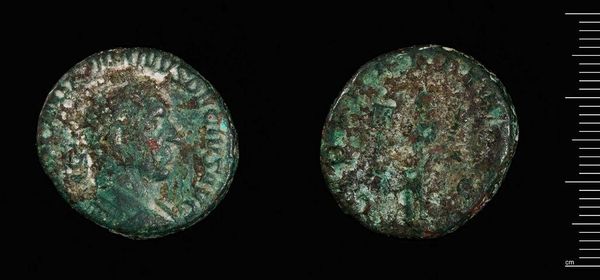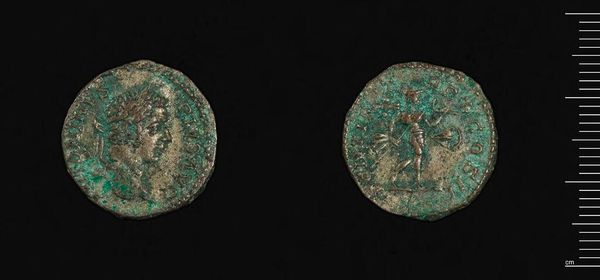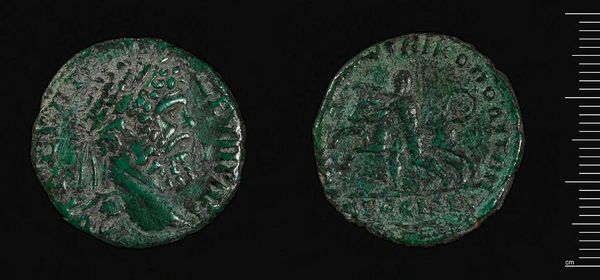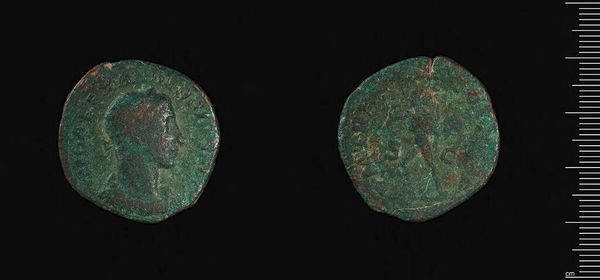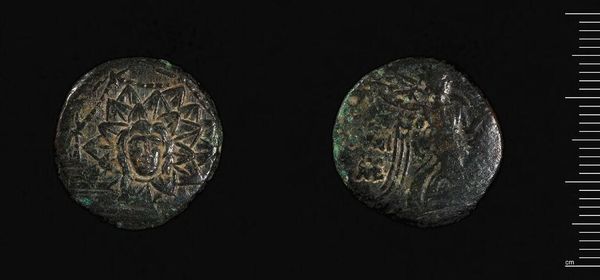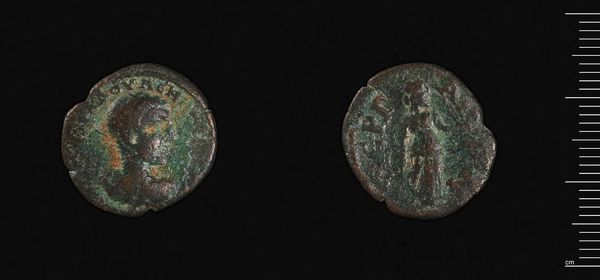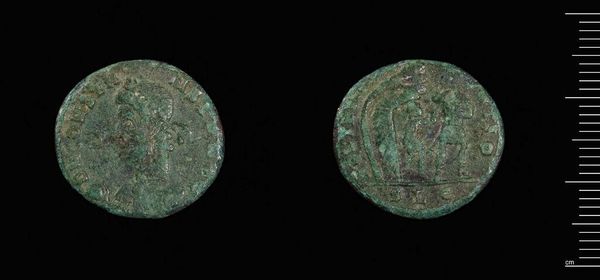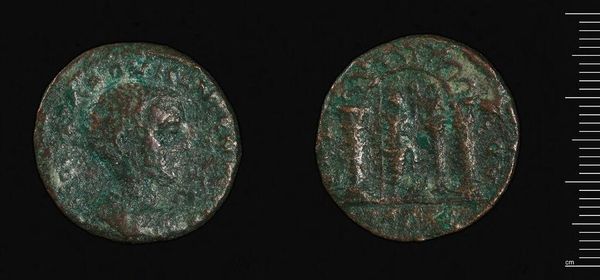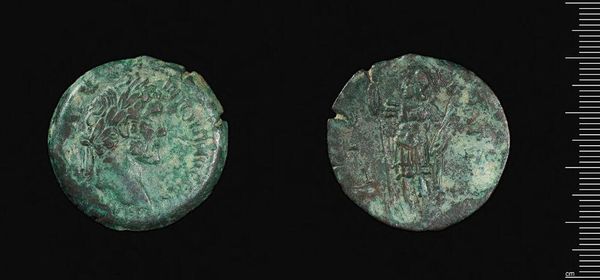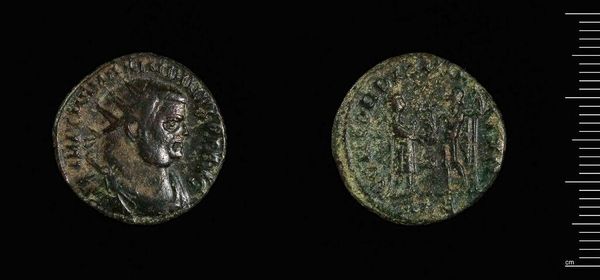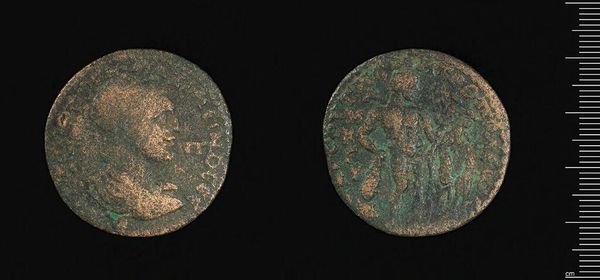
Dimensions: 10.93 g
Copyright: CC0 1.0
Editor: This is a coin of Mopsos under Antoninus Pius, part of the Harvard Art Museums collection. It’s fascinating to consider how this small object served as a form of political and social currency. What can you tell me about its historical significance? Curator: This coin reveals much about the Roman Empire's cultural influence in smaller cities like Mopsos. Coinage served not only as currency but also as propaganda, disseminating images of imperial power and local identity. What do you notice about the imagery used? Editor: It's interesting to see the emperor's portrait alongside what looks like a local deity or symbol. I guess it created a sense of connection between the local people and the Roman leadership. Curator: Exactly! The very act of creating these coins within Mopsos highlights the negotiated relationship between the local elite and Roman power. The coin demonstrates an intricate interplay of political control and regional assertion. Editor: I never thought a coin could tell such a complex story about cultural exchange and power dynamics. It really makes you think about how these objects shaped society. Curator: Indeed. Considering the public role of art objects like coins challenges the notion of art as simply aesthetic, showing instead the intricate politics of imagery.
Comments
No comments
Be the first to comment and join the conversation on the ultimate creative platform.

